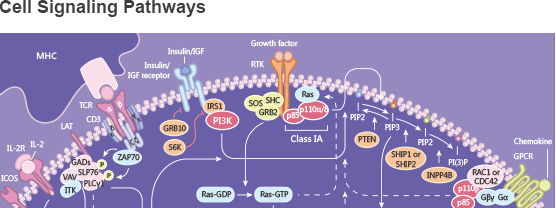
|
MedChemExpress (MCE) provides a wide range of life-science biochemicals, including more than 100,000 bioactive compounds, dye reagents, peptides and
natural compounds for laboratory and scientific use. If you need these products, please do not hesitate to contact us via
|
|
CAS No.: 1421854-16-1
|
|
|
|
|
Research Area: Estrogen Receptor/ERR/Neurological Disease
|
 |
| • |
A selective non-steroidal estrogen receptor β (ERβ) agonist with EC50 values of 6 nM and 5000 nM for ERβ and ERα, respectively. |
| • |
Exhibits gender selective neuroprotective effects in a male rat model of Parkinson’s disease. |
|
|
|
Solubility: DMSO: 100 mg/mL (326.46 mM; Need ultrasonic)
|
|
|
CAS No.: 216227-54-2
|
|
|
|
|
Research Area: P-glycoprotein/Cancer
|
 |
| • |
An orally active P-glycoprotein (P-gp) inhibitor with an IC50 of 160 nM. |
| • |
Inhibits P-gp and reverse multidrug resistance at nM concentrations with no effect on Paclitaxel pharmacokinetics. |
|
|
|
Solubility: DMSO: 100 mg/mL (202.15 mM; Need ultrasonic)
|
|
|
CAS No.: 1443748-47-7
|
|
|
|
|
Research Area: mGluR/Neurological Disease
|
 |
| • |
A selective and brain-penetrant mGlu1 receptor negative allosteric modulator, exhibits >100-fold selectivity for mGlu1 over mGlu2-8. |
| • |
Inhibits Glutamate-induced calcium flux in cells expressing human mGluR1 with an IC50 of 99 nM. |
|
|
|
Solubility: DMSO: 41.67 mg/mL (114.33 mM; Need ultrasonic and warming and heat to 60°C)
|
|
| Animal-Free Recombinant Proteins |
|
|
|
Animal-free means that no animal-derived material is involved in the production process. Animal-free recombinant proteins have the same biological activity as proteins produced using standard laboratory techniques.
MCE offers 200+ animal-free recombinant proteins for various research areas. Compared with traditional recombinant proteins, animal-free recombinant proteins have the following advantages.
1. No introduction of animal-derived pathogens into the culture system
2. No xenobiotic rejection or allergic reactions in animals or humans
3. No ethical and moral issues |
|
|
|
|
| Anti-Aging Natural Products |
|
|
|
Aging is an unavoidable process, leading to cell senescence due to physiochemical changes in an organism. The purpose of anti-aging activities is to increase the life span and the quality of life. Anti-aging activities are primarily involved in the therapies of age-related disorders such as Parkinson’s Disease (PD), Alzheimer’s Disease (AD), cardiovascular diseases, cancer, and chronic obstructive pulmonary diseases. Natural products are known as effective molecules to delay the aging process
through influencing metabolic pathways and thus ensure an extended lifespan. |
| Product Name |
Description |
| Isofalcarintriol |
A NRF2 activator and a selective mitochondrial ATP synthase inhibitor. A potent promoter of longevity in the nematode C. elegans. |
| 24-Methylenecholesterol |
A natural marine sterol, possess anti-aging effects in yeast. |
| Oleuroside |
Protecting against mitochondrial dysfunction in models of early Alzheimer’s disease and brain aging. |
| Epifriedelanol |
Slowing the aging of human skin fibroblasts. |
| Boeravinone B |
Acting as an anti-aging and anti-apoptosis phyto-molecule during oxidative stress. |
|
|
|
| MCE Compound Library |
|
|
|
| Provides a professional compound library to serve research in multiple fields including cancer, metabolism, etc. |
| Product Name |
Description |
Metabolic Enzyme Compound Library |
As catalysts in metabolism, metabolic enzymes play an important role in organism metabolism, and their dysfunction can lead to the occurrence of various metabolic diseases.
Containing 2,800+ metabolic enzyme compounds, which can be widely used in the study of metabolic diseases. |
Antibody Inhibitor Library |
In drug screening, antibody inhibitor-based screening can identify active compounds that target the target proteins and target diseases.
Containing antibody inhibitors, which can be used for drug development in cancer, immunity, infection and other hot research areas. |
|
|
|
|
|
| Latest Publications Citing Use of MCE Products |
 |
Nat Med.
2023 Mar;29(3):632-645.
Nature.
2024 Mar;627(8002):149-156.
Cell.
2024 Feb 29;187(5):1223-1237.e16.
Science.
2024 Feb 2;383(6682):eadh4859. |
|
 |
|
Request Your Quote |